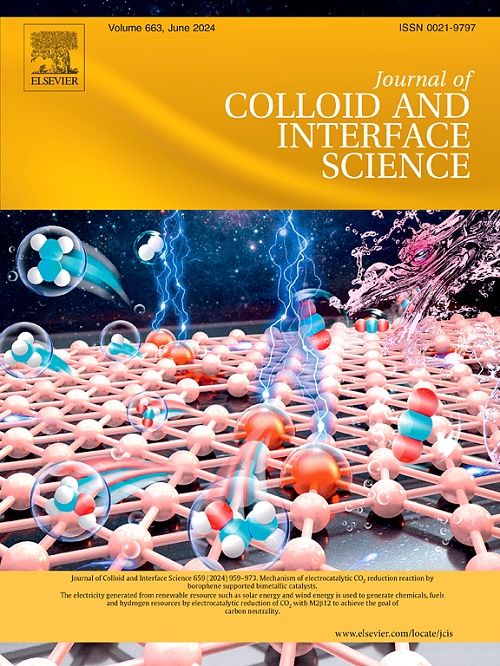A simple two-dimensional metal–organic framework–based phototherapy nanoplatform with a triple-synergistic mechanism for enhanced wound infection treatment
IF 9.4
1区 化学
Q1 CHEMISTRY, PHYSICAL
引用次数: 0
Abstract
Selecting an appropriate treatment for bacterial infections is critical. However, the rising prevalence of antimicrobial resistance has rendered many existing therapies less effective, highlighting the urgent need for novel antimicrobial strategies that are less prone to inducing antimicrobial resistance. Herein, we propose a simple, energy-efficient, photoresponsive antibacterial strategy based on metal–organic frameworks. Specifically, we developed an Au@Cu-THQ system activated by near-infrared laser irradiation, capable of exerting a synergistic triple-mode antibacterial effect-photothermal, photodynamic, and glutathione (GSH) depletion for the effective treatment of bacterial infections. The photothermal effect notably enhances the generation of reactive oxygen species and accelerates GSH depletion within bacterial cells, leading to a substantial disruption of their antioxidant defense systems and significantly amplifying the photodynamic therapeutic effect. Moreover, this material demonstrated excellent and stable photothermal performance both in vitro and in vivo, characterized by high photothermal conversion efficiency and effective GSH depletion activity. These features contribute to its potent antibacterial and anti-inflammatory effects, offering a promising multimodal strategy for the future development of in vivo anti-infective formulations.

一种简单的二维金属-有机框架光疗纳米平台,具有三重协同机制,可增强伤口感染治疗
为细菌感染选择合适的治疗方法至关重要。然而,抗菌素耐药性的日益流行使得许多现有的治疗方法效果较差,这突出表明迫切需要不容易诱导抗菌素耐药性的新型抗菌素策略。在此,我们提出了一种简单、节能、光响应的基于金属有机框架的抗菌策略。具体来说,我们开发了一个Au@Cu-THQ系统,由近红外激光照射激活,能够发挥协同三模式抗菌作用-光热,光动力和谷胱甘肽(GSH)消耗,有效治疗细菌感染。光热效应显著增强了活性氧的产生,加速了细菌细胞内谷胱甘肽的消耗,导致其抗氧化防御系统的实质性破坏,并显着放大了光动力治疗效果。此外,该材料在体外和体内均表现出优异而稳定的光热性能,具有较高的光热转换效率和有效的GSH消耗活性。这些特点有助于其有效的抗菌和抗炎作用,为体内抗感染制剂的未来发展提供了一个有希望的多模式策略。
本文章由计算机程序翻译,如有差异,请以英文原文为准。
求助全文
约1分钟内获得全文
求助全文
来源期刊
CiteScore
16.10
自引率
7.10%
发文量
2568
审稿时长
2 months
期刊介绍:
The Journal of Colloid and Interface Science publishes original research findings on the fundamental principles of colloid and interface science, as well as innovative applications in various fields. The criteria for publication include impact, quality, novelty, and originality.
Emphasis:
The journal emphasizes fundamental scientific innovation within the following categories:
A.Colloidal Materials and Nanomaterials
B.Soft Colloidal and Self-Assembly Systems
C.Adsorption, Catalysis, and Electrochemistry
D.Interfacial Processes, Capillarity, and Wetting
E.Biomaterials and Nanomedicine
F.Energy Conversion and Storage, and Environmental Technologies

 求助内容:
求助内容: 应助结果提醒方式:
应助结果提醒方式:


